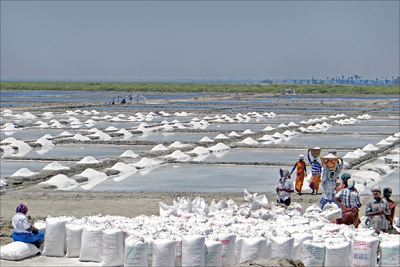Difference between revisions of "Evaporation of Solutions"
| Line 27: | Line 27: | ||
: The '''evaporation of solutions''' recovers the [[solute]]s but loses the [[solvent]]. | : The '''evaporation of solutions''' recovers the [[solute]]s but loses the [[solvent]]. | ||
: '''Evaporation of solutions''' can be done by directly heating the [[solution]] or by giving time for the [[liquid]] to [[evaporating|evaporate]] at low [[temperature]]s. | : '''Evaporation of solutions''' can be done by directly heating the [[solution]] or by giving time for the [[liquid]] to [[evaporating|evaporate]] at low [[temperature]]s. | ||
| + | {| class="wikitable" | ||
| + | |- | ||
| + | |[[File:EvaporationDiagram.png|center|500px]] | ||
| + | |- | ||
| + | | style="height:20px; width:200px; text-align:center;" |The [[diagram]] shows the experimental setup to [[evaporating|evaporate]] away the [[solvent]] to leave behind the [[solute]] in the [[Evaporating Dish|evaporating dish]]. | ||
| + | |} | ||
Revision as of 12:04, 27 September 2018
Contents
Key Stage 2
Meaning
Evaporation of a solution is a way to get back a solid that has been dissolved in a liquid.
About Evaporation of Solutions
| You can separate salt from the water by evaporating the water in an evaporating dish. |
Examples
| These people collect salt by putting sea water in small ponds and allowing the warm temperatures to evaporate the water away leaving the behind the salt. |
Key Stage 3
Meaning
Evaporation of a solution is a way to recover the solute that has been dissolved in a solvent.
About Evaporation of Solutions
- The evaporation of solutions recovers the solutes but loses the solvent.
- Evaporation of solutions can be done by directly heating the solution or by giving time for the liquid to evaporate at low temperatures.
| The diagram shows the experimental setup to evaporate away the solvent to leave behind the solute in the evaporating dish. |


